Gear Reviews
Skjold Drakkar Catacomb 6 String Bass Review
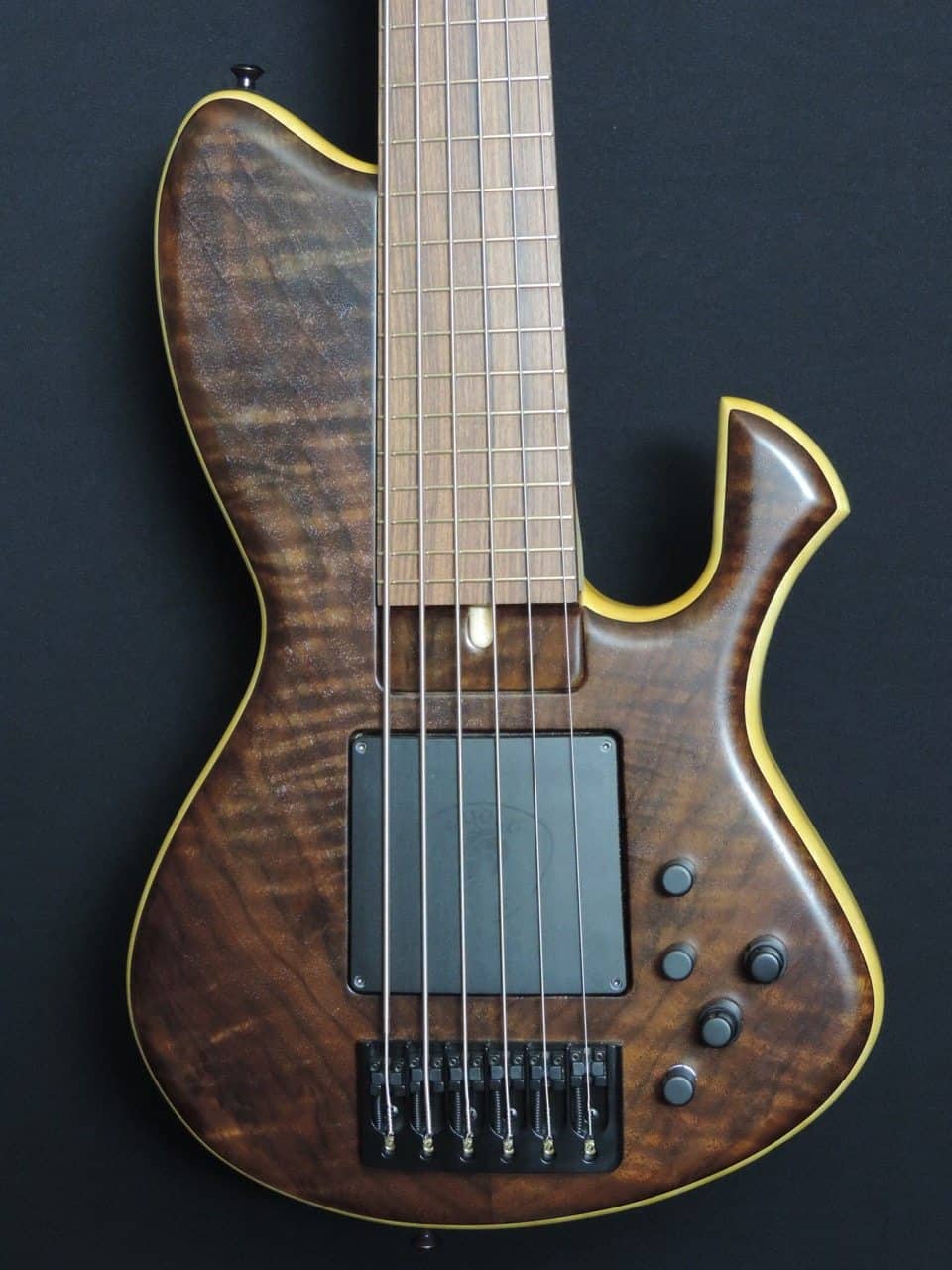
Skjold Drakkar Catacomb 6 String Bass Review…
- 34” Scale length
- Obeche (African whitewood) chambered core
- Figured walnut top and back
- 1 piece quarter sawn bolt-on maple neck
- Pau Ferro fingerboard
- Evo Gold narrow fret wire
- Skjold integrated playing ramp
- Skjold/Armstrong dual coil pickups
- Skjold/East Uni-Pre preamp.
- Skjold/Hipshot proprietary bridge with graph tech string saddles
- Hisphot tuners
There is a particular kind of satisfaction that comes with playing a bass that is just plain exceptional. More often than not, if you look hard enough, you can find something about an instrument that could have been done better. Between my part-time job reviewing basses, and my own twisted obsession with seeking out the worlds most skilled bass luthiers, I’ve had the pleasure of playing some truly wonderful basses. Through all this, I’ve grown to deeply respect the rare and small group of bass luthiers who are able to consistently produce great instruments. By great I mean: instruments that are exceptionally well designed and thought out, perfectly constructed with the best materials, which nail their target tonal goal, and play almost better than imaginable. When Pete Skjold stopped by my house to deliver my new bass on his way to a local expo, he shared with me the 5-6 basses he had on hand for the show. I was stunned (not only by how my instrument turned out, but) by how incredible each and every bass was, in its own right. No matter the bass, it seemed like Pete just nailed what that instrument was born to do. Like a master sculptor who sees a slab of material and naturally understands how the medium wants to be worked, Pete seems to have a sixth sense about how the pieces fit together toward the desired outcome. Its no wonder he’s called “the wood whisperer”. His deep command of how to combine elements toward a desired end result is frighteningly sharp. Every one of his basses I picked up was better than the last! I remember looking at him after playing 4 or 5 different Skjolds and blurting out “So… you’re kind of a freak, eh?” I meant it in a good way!
Many people familiar with Skjold’s work will recognize his distinctive shapes. The clear vision of Pete’s design goals is evident in all of his models. Skjold recently unveiled some new models, several of which are revamps of his previous designs, having evolved naturally over the decades that Skjold has been building. The Drakkar model evolved from the Damian Erskine signature Whaleback, Pete’s flagship single cutaway bass. The Drakkar includes several aesthetic and functional tweaks, including a somewhat more rounded and streamlined appearance than the Whaleback. For my tastes, the visual refinements are spot on, and the result is an extremely pleasing looking and feeling instrument.
Besides the new Drakkar body shape, this instrument features Pete’s heavily chambered and extra thick body, appropriately designated as a “Catacomb” model. Pete wanted to design a semi-hollow bass that imparts desirable acoustic properties such as “air”, “depth” and “bloom” to the sound, but doesn’t lose the low mid punch and focus that can sometimes result from semi-hollow construction. This is a tough balancing act, as many builders will attest to, and the Catacomb truly does nail the best of both worlds. Having played a handful of high end semi-hollow/chambered instruments, this bass has the focus and authoritative push of a solid body instrument, but has an unmistakable bloom and depth to the notes that really add dimension to the sound. As Damian Erskine puts it: My Skjold Catacomb was an attempt by Pete and myself to develop a bass that was 100% even across it’s entire range, had a bit more ‘wood’ in the sound when necessary but also still gets growly and burpy with the best of them. I don’t know how he did it, but he nailed it. It’s the only 6 string I’ve ever loved the PASSIVE sound of. I bypassed the preamp in the bass and only play it passively because it just sounds perfect to me.”
Construction-wise, there is literally nothing on this bass that is out of place or could even remotely be considered a flaw. The neck is slim and buttery smooth, with nicely rounded edges and impeccably dressed frets, and the whole bass sports a satin finish that lets you feel the wood grain under your fingers. The gorgeous walnut top and back is slightly enhanced and glows with a rich warmth. The one-piece maple neck is rock solid and feels lovely under the fingers. The Pau Ferro fingerboard is a lovely specimen, and the fretwork is, literally, second to none.
I ordered this bass with Pete’s custom Kent Armstrong dual coil pickups, and the East/Skjold pre, which is based on the new John East Uni-Pre preamp. The firm warmth and solid low end of the pickups was very well complemented by the powerful and versatile preamp. In addition to active bass and treble boost, a semi parametric midrange stack, volume, blend and passive tone, the East preamp features some impressive controllability via settings in the control cavity. There, you can adjust the individual pickup volumes, the frequency for the treble knob, and the bass “window”. Two thumbwheels allow you to tailor the center frequency and width of the bass boost/cut. You can also select whether you want a flat tonal response, or the classic upper-midrange curve that many familiar with the popular East Retro/Deluxe will recognize. All of this is pure gold, if you ask me. No two basses are alike in their frequency response, not to mention that bassists have a wide range of preferences for how they like their onboard eq to work. The East offers the ability to customize your preamp to your tastes, your instruments’ inherent tone, or any other variable. Having owned a bass with this preamp in the past, I an enamored by the ability to tailor my onboard EQ so that it performs JUST how I like it to.
Two dual coil pickups are located under the pickup “ramp” that Skjold sets into the body. The integrated Skjold ramp is an elegant and highly functional solution for those who like playing ramps. Rather than two pickups with a slab of wood in between, the Skjold ramp offers a uniform playing surface with no edges or contours to navigate, and makes for a very satisfying experience for guys like me, who have adapted their technique to using ramps. Skjold offers ramps made from exotic woods (to match the top, for example), but I ordered the standard version, made from a cast resin, which is nicely textured, feels solid, and has the Skjold logo laser etched in a very classy and subtle way.
Gigging is of course the great litmus test for an instrument, and I always like to see how a bass will perform ‘when the rubber meets the road’. Any sonic weirdness or tonal imbalances usually become pretty obvious when stuck in a busy mix on a loud stage. The thing that immediately impressed me about the Drakkar (besides how shockingly even it was from top to bottom) was how big and authoritative it sounds. It speaks with a huge, deep voice that really commands the bandstand. Band mates were quick to say that the Skjold sounded decidedly more assertive and full than other basses I’ve played. The Drakkar’s sonic authority sound made it easier to ‘play the band’: keeping everyone on point, driving the rhythm, informing the melody, and generally shaping the direction of the music.
The Drakkar came strung with a medium gauge set of Skjold Hybrid strings, which employ a combination of steel inner wrap with nickel outer wrap, resulting in a taut, focused sound with fantastic clarity and fundamental. I requested the bass with low action, and what I got was what I like to call “stupid low”. I could barely play the darn thing, and it had zero fret buzz! (Who is this guy?) Raising the saddles a hair resulted in low action with fantastic playability and tone. In an effort to bring out the woody and complex midrange, I tried a set of Skjold light gauge flat wound strings as well as a set of GHS Pressurewounds. The Flats offered just that: woody complexity and strong fundamental (and were surprisingly articulate) but I couldn’t quite get used to the flatwound feel on this particular bass. The GHS were a great middle ground, with their compressed outer windings. These hit the mark nicely, taming the highs and upper mids, while offering wonderfully smooth tone and feel. I also experimented with a set of Skjold Tension Balanced strings, which brought out a lot more clarity and detail in the upper mids and high end. I loved how each set really brought out different aspects of the Drakkars complexity, but at the end of the day, went back to the trusty Skjold Hybrids as the best overall matchup. Go figure, Pete nailed it again.
I ordered this bass from Pete to use as my main instrument, as I play six string most of the time. I am the first to admit that I’m very picky about basses, especially six strings. It’s pretty tough to make a bass that excels in its entire frequency range, and that was one desire that Pete and I discussed at length. We had many conversations about tone, feel, and aesthetics, and when the bass arrived, I was blown away by how well the instrument exceeded my expectations (which were admittedly very high). Whatever I thought this bass was going to be, I was shocked by how well it suited me, and how precisely he nailed the various and hard to describe attributes I had in mind for this instrument.
Skjold’s customers are really the best testament to the quality of his work. If you ask a Skjold owner to tell you about their instrument, they invariably gush over how great the bass plays and sounds. In fact, I know of more than one connoisseur/collector of the world’s finest basses, who have said that even though they own a variety of killer instruments, their Skjolds are the ones they would grab, god forbid, in the event of a disaster. If that’s not a true endorsement, I don’t know what is.
Having played a wide handful of his basses, it’s abundantly obvious that Skjold ‘gets’ bass building on another level. He understands not only how wood sounds and behaves, but also how each ingredient in the recipe acts in relation to the whole ‘dish’. He knows how to not only craft a bass that is rock solid, reliable, and sensitive, but one that is specifically tailored to his customers requests. These days, it may not be that hard find a luthier to build you a custom instrument, but finding one with the intuitive knowledge and expertise to consistently produce flawless, perfectly balanced basses is still a very rare and special thing.
Find out more about Skjold Design Guitars by visiting website www.skjolddesign.com.
Gear Reviews
Gear Review: Exploring the Joyo Gloam – Sub Octave Fuzz Pedal for Bass
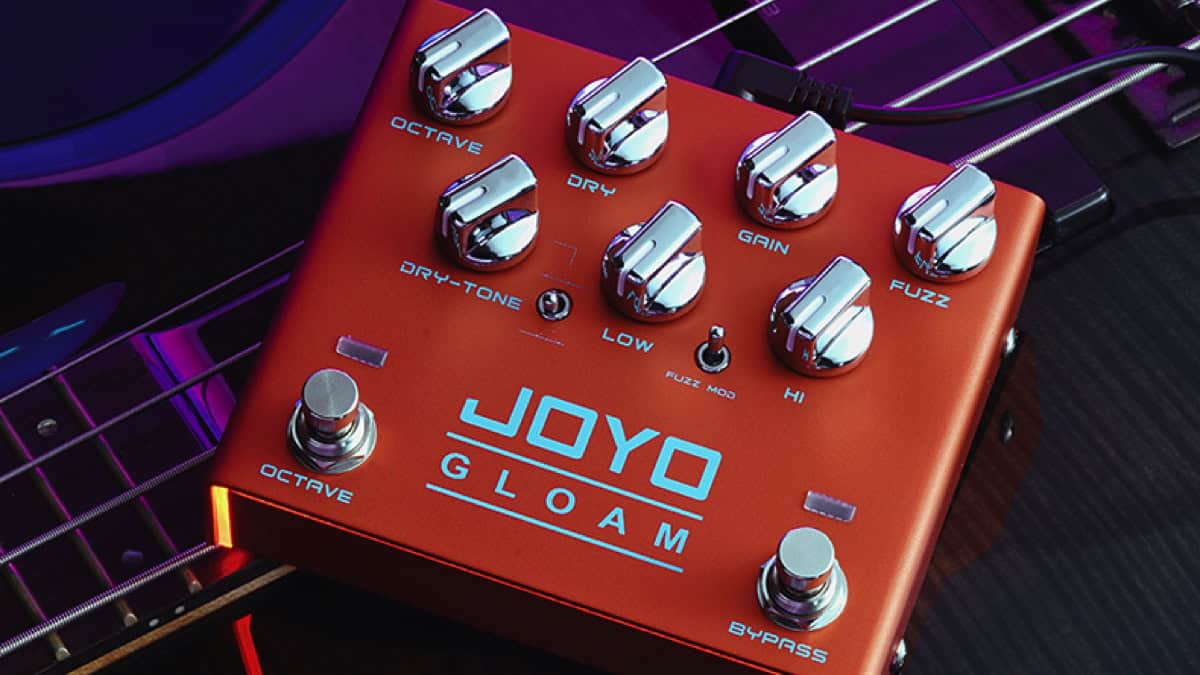
A review of the Joyo Gloam – Sub Octave Fuzz Pedal for Bass
Disclaimer: This pedal was kindly provided by Joyo for the purpose of this review. However, this does not influence our opinions or the content of our reviews. We strive to provide honest, unbiased, and accurate assessments to ensure that our readers receive truthful and helpful information.
Introduction: The Joyo Gloam is a sub-octave fuzz pedal specifically designed for bass players, combining modern sub-octave effects with rich fuzz tones. With two independently controlled circuits, the Gloam aims to provide a versatile range of sounds, from deep, aggressive fuzz to Moog-like synth effects. This review will explore the Gloam’s specifications, controls, and overall performance, highlighting both its strengths and areas for improvement.
Specifications:
- Dimensions: 130 * 110 * 50 mm
- Weight: 403g
- Working Voltage: DC 9V
- Controls: The Joyo Gloam features a comprehensive control set designed to provide bassists with a wide range of tonal options:
- Dry Tone: Adjusts the tone of the clean signal.
- Dry Volume: Controls the volume of the clean signal.
- Sub Octave Volume: Adjusts the volume of the sub octave signal.
- Gain: Controls the amount of gain in the fuzz circuit.
- Fuzz: Adjusts the intensity of the fuzz effect.
- Bass: Controls the bass frequencies in the fuzz circuit.
- Treble: Adjusts the treble frequencies in the fuzz circuit.
- Fuzz Mode Switch: Switches between two different fuzz modes.
- Dry Tone Frequency Switch: Selects between two different frequency points for the dry tone.
Performance: The Joyo Gloam excels in its dual-circuit design, offering both a sub octave and a fuzz channel that can be controlled individually. However, it’s important to note that the octaver cannot be used without the fuzz circuit activated; the only way to solo the octaver is by turning down the fuzz while both channels are engaged.
Fuzz Circuit: The fuzz circuit includes standard controls such as gain, volume, bass, and treble, along with a fuzz mode switch that toggles between two distinct fuzz modes. While one of the fuzz modes is highly usable and delivers a rich, aggressive tone, the other mode falls short and is less practical for most applications.
Octaver Circuit: The octaver circuit features controls for sub octave volume, clean volume, and clean tone, along with a dry tone frequency switch that provides two different frequency options. This allows for significant tonal versatility, enabling bassists to fine-tune their sound to match their preferences. Despite its limitation of being tied to the fuzz circuit, the octaver produces a deep, balanced sound that stands out.
Combined Effect: When used together, the fuzz and octaver circuits create a wide range of sounds, from classic, aggressive fuzz to synth-like tones reminiscent of a Moog synthesizer. This combination makes the Gloam a powerful tool for bassists seeking to experiment with their sound and achieve unique, textured tones.
Pros:
- Versatile Controls: Extensive control options for both fuzz and octaver circuits.
- Rich Tones: Delivers deep, aggressive fuzz and balanced octaver sounds.
- Sturdy Construction: Durable build quality ensures reliability.
- Wide Range of Sounds: Capable of producing everything from classic fuzz to synth-like effects.
Cons:
- Unusable Fuzz Mode: One of the fuzz modes is less practical.
- Dependent Octaver: Octaver cannot be used independently of the fuzz circuit.
Conclusion: In conclusion, the Joyo Gloam sub-octave fuzz pedal offers a versatile and powerful option for bassists looking to expand their tonal palette. Despite some flaws, the Gloam delivers impressive sounds and flexibility. Its combination of rich fuzz and deep octaver tones, coupled with a sturdy construction, makes it a valuable addition to any bassist’s pedalboard. For those seeking a modern bass distortion with the added depth of sub-octave effects, the Joyo Gloam is a compelling choice for a very compelling price.
Visit online at joyoaudio.com/product/281.html
Gear Reviews
Gear Review: Joyo Monomyth – A Versatile Modern Bass Preamp
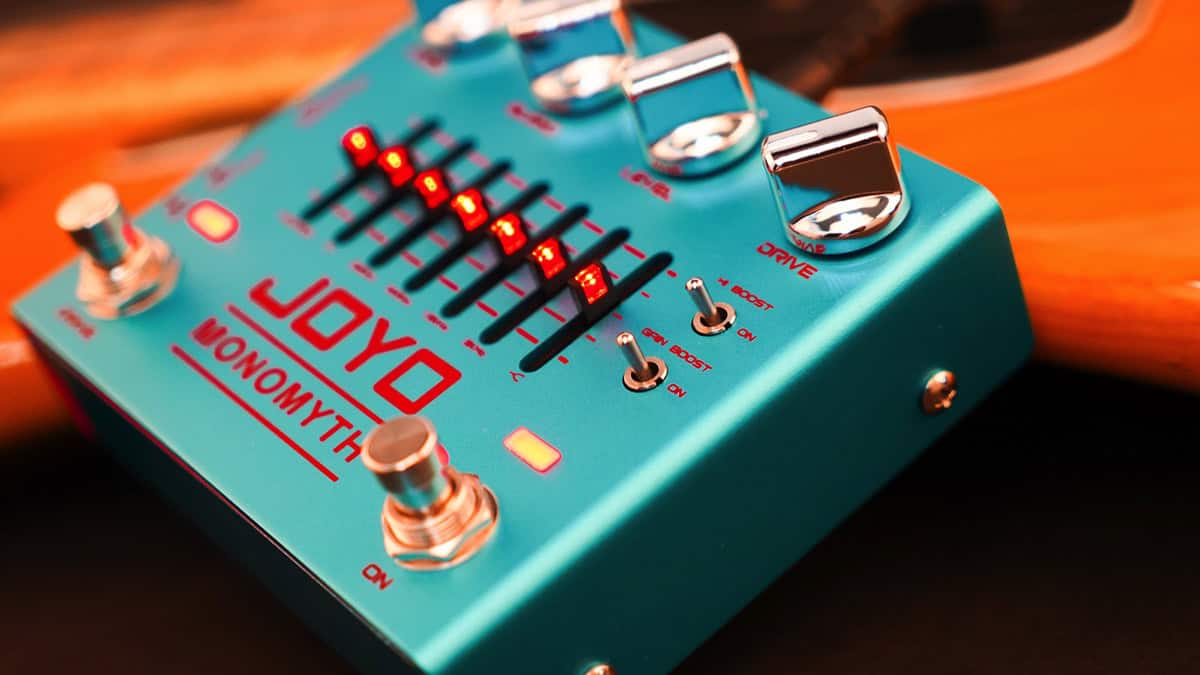
Disclaimer: This pedal was kindly provided by Joyo for the purpose of this review. However, this does not influence our opinions or the content of our reviews. We strive to provide honest, unbiased, and accurate assessments to ensure that our readers receive truthful and helpful information.
Introduction:
The Joyo Monomyth bass preamp pedal is designed to offer bassists a comprehensive range of tonal options, combining modern features with practical functionality. With independent channels for EQ and overdrive, as well as useful additions like a cab sim and DI output, the Monomyth aims to be a versatile tool for both live performances and studio sessions. This review will delve into the pedal’s specifications, controls, and overall performance to determine if it lives up to its promise of delivering quality and flexibility at an affordable price.
Specifications:
– Dimensions: 130 * 110 * 50 mm
– Weight: 442g
– Working Voltage: DC 9V
Controls:
The Joyo Monomyth is equipped with a comprehensive set of controls designed to provide maximum tonal flexibility:
– Voice: Adjusts the character of the overdrive, from distortion to fuzz.
– Blend: Balances the dry and effected signals, crucial for maintaining low-end presence.
– Level: Sets the overall output volume.
– Drive: Controls the amount of gain in the overdrive channel.
– Treble Boost: Enhances high and mid frequencies for clarity in complex passages.
– Gain Boost: Adds extra gain, particularly effective at low gain settings to enhance the low e.
– EQ Function Controls: Features a 6-band graphic EQ plus a master control for precise nal shaping.
– Ground Lift Switch: Helps eliminate ground loop noise.
– Cab Sim Switch: Activates a simulated 8×10″ cab sound.
– LED Light Control: Customizes the pedal’s ambient lighting.
Performance:
The Joyo Monomyth shines in its dual-channel design, offering both a transparent EQ channel and a versatile overdrive channel. The 6-band EQ allows for detailed tonal adjustments, preserving the natural character of your bass while providing ample flexibility. The voice control mimics the functionality of the Darkglass Alpha Omega, shifting from distortion to fuzz, with a sweet spot around the middle for balanced tones.
The blend control is essential for retaining the low end when using distortion, ensuring your bass remains powerful and clear. The treble and gain boosts, available on the overdrive channel, further enhance the pedal’s versatility, making it suitable for everything from subtle drive to full-blown fuzz.
Outputs are plentiful, with a DI and XLR out for direct recording or ampless setups, and a headphone out for convenient practice sessions. The cab sim switch adds a realistic 8×10″ cab sound, enhancing the Monomyth’s utility in live and studio environments.
Pros:
– Versatile Control Set: Offers a wide range of tones, from clean to fuzz.
– Blend Control: Maintains low-end presence.
– Robust Outputs: DI, XLR, and headphone outs make it adaptable for various setups.
– Affordable: Provides high-end functionality at a budget-friendly price.
– Sturdy Construction: Durable build quality ensures reliability.
Cons:
– Plastic Knobs: May feel less premium compared to metal controls.
– Boosts Limited to Overdrive Channel: Treble and gain boosts do not affect the EQ channel.
– Cab Sim only on the XLR out: how cool would it be to also have it on the headphone out?
Conclusion:
In conclusion, the Joyo Monomyth stands out as a versatile and powerful bass preamp pedal, offering a range of features that cater to both traditional and modern bassists. Its dual-channel design, comprehensive control set, and robust output options make it a valuable tool for achieving a wide spectrum of tones, from clean and warm to heavily distorted. For bassists seeking flexibility, reliability, and excellent value, the Joyo Monomyth is a top contender.
For more information, visit online at joyoaudio.com/product/267.html
Gear Reviews
Gear Review: Joyo Double Thruster – Modern Bass Distortion Redefined
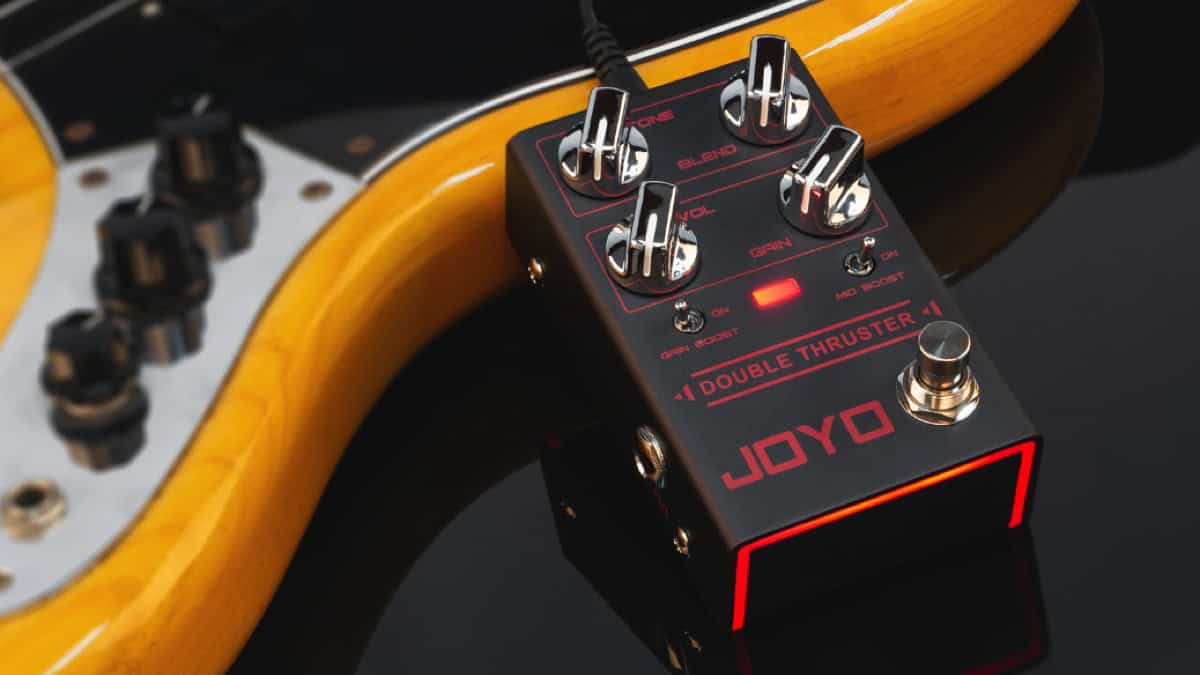
Review of the Joyo Double Thruster…
Disclaimer: This pedal was kindly provided by Joyo for the purpose of this review. However, this does not influence our opinions or the content of our reviews. We strive to provide honest, unbiased, and accurate assessments to ensure that our readers receive truthful and helpful information.
Introduction: When it comes to bass distortion, finding a pedal that delivers a wide spectrum of tones while maintaining the essential low end can be challenging. The Joyo Double Thruster, a modern bass distortion pedal designed to cater to the diverse needs of bassists was a pleasant surprise that we had the opportunity to review. From subtle overdrive to full-on fuzz, the Double Thruster delivers with versatility and affordability.
Specs: The Joyo Double Thruster is compact yet robust, making it ideal for both stage and studio use. Here are its key specifications:
Dimensions: 109 * 72 * 48 mm
Weight: 250g
Working Voltage: DC 9V
Controls: The Double Thruster features a comprehensive control set that allows for precise tonal sculpting:
Tone: Adjusts the overall tonal character of the distortion.
Blend: Critical for bassists, this control blends the dry signal with the distorted signal, ensuring the low end remains intact.
Volume: Sets the output level of the pedal.
Gain: Controls the amount of distortion, from mild overdrive to full fuzz.
Gain Boost Switch: Provides a noticeable boost, especially at lower gain settings, enhancing the low end and adding depth to the tone.
Mid Boost Switch: Boosts mid frequencies, helping the sound cut through the mix with greater clarity and definition.
LED Light Control: Customizes the ambient lighting of the pedal.
Performance: The Joyo Double Thruster excels in delivering a range of distortion tones while retaining the essential low end that bassists need. The blend control is particularly useful, allowing users to mix the clean and distorted signals to maintain clarity and punch. The gain boost switch adds a pleasing depth to the low end, especially noticeable at lower gain settings, while also compensating for low end loss at higher gain levels. The mid-boost switch enhances the pedal’s ability to cut through complex mixes, making it ideal for intricate playing.
In terms of versatility, the Double Thruster can emulate a variety of distortion sounds, from subtle warmth to high-mid, djenty grind. This makes it an excellent tool for bassists exploring different genres and styles.
Pros:
- Blend Control: Essential for retaining the low end in a distorted signal.
- Size and Weight: Compact and sturdy design.
- Rugged Construction: Durable build quality.
- Gain and Mid Boosts: Adds versatility and clarity to the tone.
- Affordable Price: Offers excellent value for money.
Cons:
- Plastic Knobs: May feel less premium compared to metal controls.
- Comparison to High-End Pedals: While close, it may not fully match the tone of more expensive pedals like the Darkglass B3K, and that’s ok. The Double Thruster is a great pedal on its own!
Conclusion: In conclusion, the Joyo Double Thruster stands out as a versatile and affordable option for bassists seeking a wide range of distortion tones. Its thoughtful design and comprehensive controls make it a great tool for achieving everything from mild overdrive to full fuzz, all while maintaining the crucial low end. For bassists looking to expand their tonal palette without breaking the bank, the Joyo Double Thruster is a must-have addition to their pedalboard.
Visit online at joyoaudio.com
Bass Videos
Review: Minuendo Lossless Earplugs Live 17dB
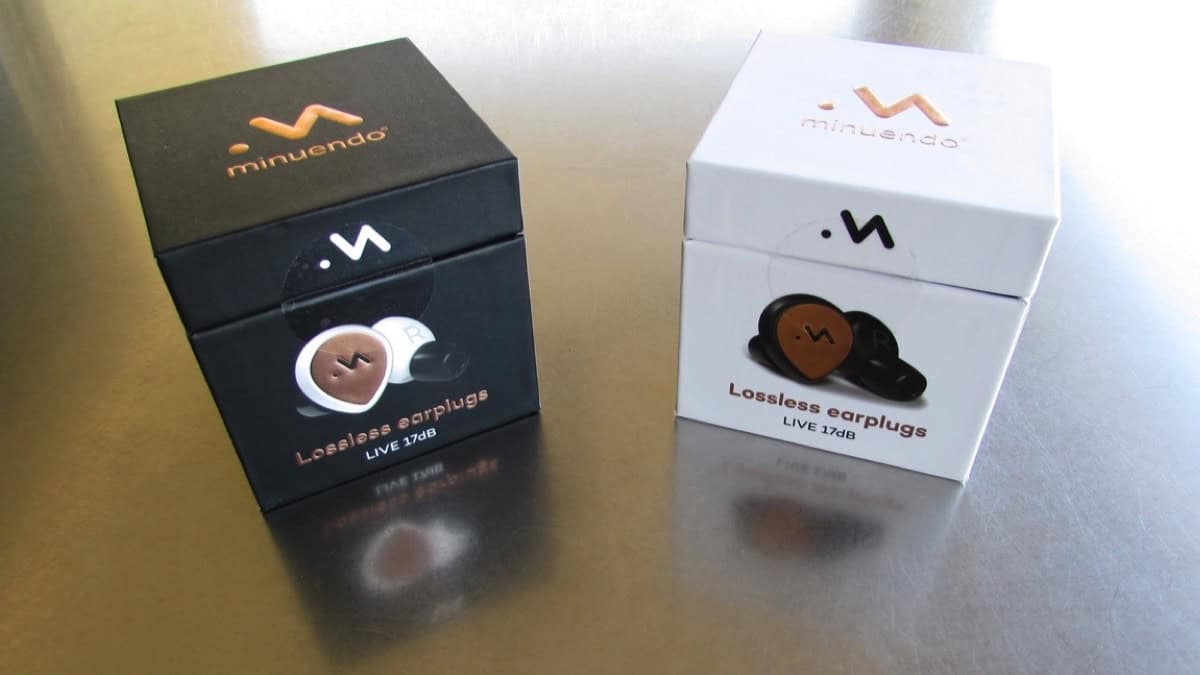
Minuendo Lossless Earplugs Live 17dB…
Minuendo Lossless Earplugs Live 17dB – Hearing protection has always been front and center on my mind because I love music so much, I cannot imagine my life if I were unable to hear.
You might remember back in 2021, we had a good look at the Minuendo Lossless Earplugs featuring adjustable protection. This system has a lot of very good features but there was always the question of how much sound attenuation to choose.
Now, the great folks at Minuendo have come up with a new version of their earplugs that has a set 17dB noise reduction. You still get a lot of the great features of the adjustables but you just don’t have to think about the specific sound level. In addition, this new version of earplugs comes at a very attractive price point.
For more information, visit online at Minuendo.com
Gear Reviews
Review: Joyo Tidal Wave Preamp
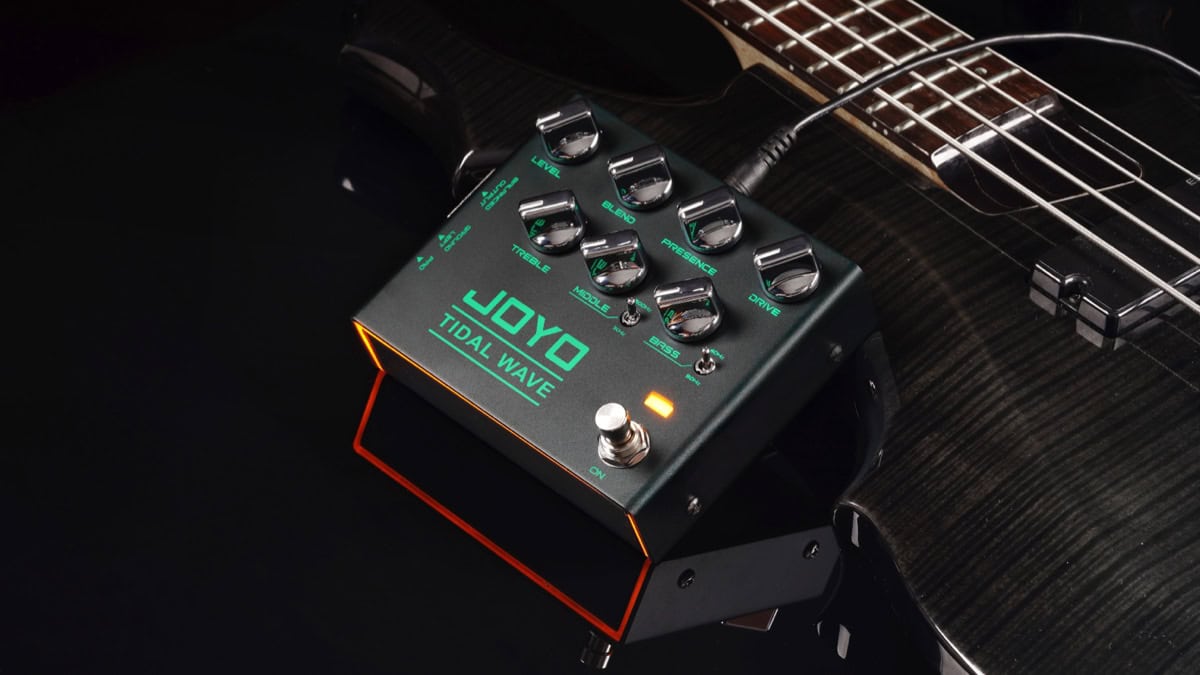
Joyo Tidal Wave Preamp: A Tribute to 90’s Iconic Sounds
Disclaimer: This pedal was kindly provided by Joyo for the purpose of this review. However, this does not influence our opinion or the content of our review. We strive to provide honest, unbiased, and accurate assessments to ensure that our readers receive truthful and helpful information.
In the realm of bass preamp/DI pedals, capturing the essence of iconic tones from the 90s can often feel like an elusive pursuit. However, the Joyo Tidal Wave Preamp emerges as a great option for bass players seeking to replicate the signature sounds of that era, particularly the revered tech21 SansAmp. With its robust feature set and compact design, the Tidal Wave offers a faithful homage to classic rock tones and low-gain distortions, all while providing modern conveniences for today’s bassist. Let’s delve into why the Joyo Tidal Wave stands out as a versatile and budget-friendly tool for both stage and studio.
Specs:
Measuring at 130 * 110 * 50 mm and weighing 442g, the Joyo Tidal Wave strikes a balance between portability and durability, making it ideal for gigging musicians and studio enthusiasts alike. With a power consumption of just 100 mA and a working voltage of DC 9V, the Tidal Wave ensures reliable performance in a variety of settings.
Controls:
At the heart of the Tidal Wave’s versatility lies its comprehensive control set, allowing bass players to sculpt their tone with precision. Key features include:
– Level: Sets the overall output volume of the pedal.
– Blend: Blends the dry signal with the cab-emulated signal, offering seamless integration of the pedal into any setup.
– Presence: Controls the dynamics of the high upper-mids, crucial for shaping drive tones.
– Drive: Introduces low-gain distortions and classic rock sounds into the clean tone.
– Treble, Middle, and Bass: Provides a 3-band EQ with frequency selectors for bass (40Hz – 80Hz) and mids (500Hz – 1KHz), offering ample control over tonal shaping.
– Middle Shift and Bass Shift: Allows for further fine-tuning of midrange and bass frequencies.
– Ground Lift: Helps eliminate ground loop noise in certain setups.
– DI Attenuation Switch: Adjusts the level of the DI output signal.
– LED Light Switch Control: Allows users to customize the ambient lighting of the pedal.
Performance:
True to its inspiration, the Joyo Tidal Wave excels in delivering classic rock tones and low-gain distortions reminiscent of the tech21 SansAmp. Whether you’re seeking gritty overdriven sounds or pristine clean tones, the Tidal Wave offers unparalleled flexibility and sonic versatility. The inclusion of a headphone out, XLR DI out with cab simulation, and throughout for the original bass sound make the Tidal Wave a versatile tool for both stage and studio applications. From practicing silently with headphones to crafting quality recordings in an ampless setup, the Tidal Wave delivers on all fronts with clarity, definition, and unmistakable character.
Pros:
The Tidal Wave boasts an array of advantages that set it apart from its direct competitors:
– Headphone Out: Transforms the pedal into a convenient practice tool.
– Size and Weight: Compact and lightweight design for easy transportation and setup.
– Rugged Construction: Durable build quality ensures longevity and reliability.
– DI and CabSim: Offers professional-grade direct recording capabilities with authentic cab simulation.
– Familiar Tones: Faithfully replicates the classic rock sounds of the tech21 SansAmp.
Cons:
While the Tidal Wave excels in many aspects, it does have a few drawbacks:
– Plastic Knobs: Knobs may feel less premium compared to pedals with metal controls.
– Cab Simulation Only on XLR Output: Limited cab simulation functionality may require additional routing for certain setups.
Conclusion:
In conclusion, the Joyo Tidal Wave Preamp stands as a testament to the enduring legacy of classic rock tones from the 90s. With its faithful homage to the tech21 SansAmp, comprehensive control set, and modern conveniences like headphone out and XLR DI with cab simulation, the Tidal Wave offers bassists a versatile tool for sculpting their sound with precision and finesse. Whether you’re seeking to replicate iconic tones from the past or forge new sonic territories, the Joyo Tidal Wave Preamp is sure to inspire creativity and elevate your playing to new heights.
Available online at Amazon.com











